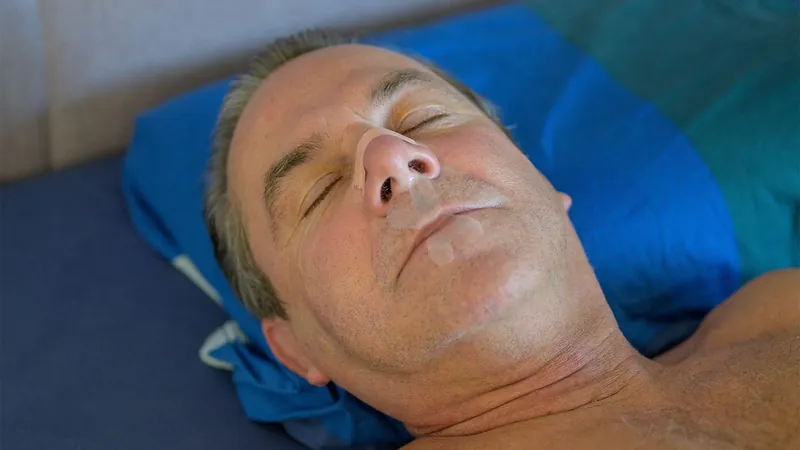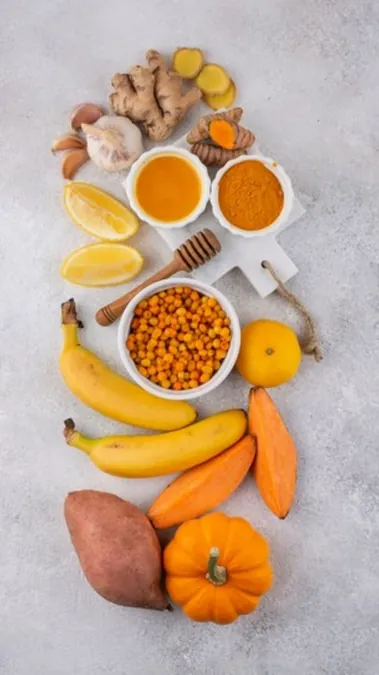
The Alarming Truth Behind #MouthTape for Sleep Apnea: New Research Raises Red Flags
2024-10-03
Author: Ming
Introduction
The trend of using 'mouth tape' to combat obstructive sleep apnea (OSA) has gained traction on social media, particularly TikTok, where videos under the #mouthtape hashtag have garnered millions of views. However, a recent study has cast serious doubts on the effectiveness and safety of this practice, suggesting that it could do more harm than good for certain individuals.
Study Overview
In a critical study conducted by researchers from Brigham & Women's Hospital and Harvard Medical School, participants with varying levels of mouth breathing were observed during a drug-induced sleep. The study specifically focused on how manually closing the mouth impacted airflow. For the 54 patients involved, the results were concerning: while closing the mouth improved airflow in those with moderate mouth breathing, it exacerbated the problem for patients who predominantly relied on mouth breathing. In fact, airflow dropped significantly by 40 percentage points for this latter group, underscoring the potential dangers of indiscriminately applying mouth taping techniques.
Expert Opinions
Dr. Daniel Vena, a leading researcher in the study, urged caution. 'The findings suggest that we should not universally recommend therapies designed to prevent mouth breathing in OSA patients,' he stated. 'It is essential to evaluate each patient individually to avoid worsening their condition.' This highlights the importance of personalized treatment approaches for sleep apnea rather than one-size-fits-all solutions promoted on social media.
Regulatory Concerns
The viral popularity of mouth taping is alarming given the lack of regulatory standards and clinical guidelines surrounding its practice. Commentary from medical experts warns of the risks associated with the trend, emphasizing that thorough research and protocols are absent from the conversation. The study's authors noted that health professionals need to closely monitor any therapies that prevent mouth breathing to ensure they do not lead to adverse outcomes.
Research Methodology
Interestingly, the research did not strictly focus on mouth taping, but instead measured the effects of mouth closure as a whole. Using drug-induced sleep allowed researchers to manipulate mouth closure without waking the patients, providing a unique perspective on how airflow was affected. Those with severe obstruction in the soft palate experienced negative consequences when their mouths were closed, as their bodies compensated for the obstruction by breathing through their mouths. In contrast, patients who faced different types of airway collapse benefitted more from mouth closure.
Patient Demographics
In total, the study included 54 patients, with a median age of 55 years and a majority being male. Interestingly, another 54 patients were excluded due to high sensitivity to mouth closure, revealing the variable responses to this approach.
Study Limitations
While some patients exhibited improved airflow with mouth closure, the researchers acknowledged significant limitations. The study's drug-induced sleep setting does not accurately reflect long-term outcomes associated with mouth taping and failed to consider individual variances in nasal obstruction, which may influence breathing patterns.
Conclusion
As the trend of mouth taping continues to spread, experts urge individuals with sleep apnea to pursue evidence-based treatments and consult healthcare professionals before trying unverified methods. The stakes are high, and misguided attempts to self-treat could lead to severe repercussions for patients who may already be struggling with their condition. Stay informed and safeguard your health—your sleep depends on it!


 Brasil (PT)
Brasil (PT)
 Canada (EN)
Canada (EN)
 Chile (ES)
Chile (ES)
 España (ES)
España (ES)
 France (FR)
France (FR)
 Hong Kong (EN)
Hong Kong (EN)
 Italia (IT)
Italia (IT)
 日本 (JA)
日本 (JA)
 Magyarország (HU)
Magyarország (HU)
 Norge (NO)
Norge (NO)
 Polska (PL)
Polska (PL)
 Schweiz (DE)
Schweiz (DE)
 Singapore (EN)
Singapore (EN)
 Sverige (SV)
Sverige (SV)
 Suomi (FI)
Suomi (FI)
 Türkiye (TR)
Türkiye (TR)